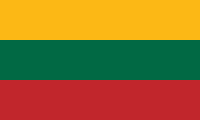
Photo from wikipedia
Most state and provincial fish and wildlife agencies have access to important information about patterns in sportsperson participation through their license databases. Using transaction data from Nebraska Game and Parks… Click to show full abstract
Most state and provincial fish and wildlife agencies have access to important information about patterns in sportsperson participation through their license databases. Using transaction data from Nebraska Game and Parks Commission’s electronic hunting and fishing license system, we tracked license purchases of Nebraska, USA, resident license holders in 2010 through 2017. We categorized sportspersons by gender and yearly purchases as hunting only (Hunter), fishing only (Angler), a combination of hunting and fishing (Hunter–Angler), or no purchases (Inactive). The probability of movement among active sportsperson groups was limited and varied little based on initial group participation. The Angler group had the greatest probability of an individual transitioning to the Inactive group (females= 0.39; males= 0.33). The Hunter–Angler group had the greatest probability of an individual remaining within the same group (females= 0.65; males= 0.76). There was a relatively low probability of an individual in the Hunter group moving to the Angler group and vice versa (≤0.02). The sportsperson population is dynamic and understanding patterns of sportsperson participation is important for the future of fish and wildlife management in North America. Using data readily available to most fish and wildlife agencies has the potential to significantly improve our understanding of hunter and angler participation and aid management agencies and conservation organizations in the development of more effective strategies for managing sportspersons. © 2020 The Wildlife Society.
Journal Title: Wildlife Society Bulletin
Year Published: 2020
Link to full text (if available)
Share on Social Media: Sign Up to like & get
recommendations!